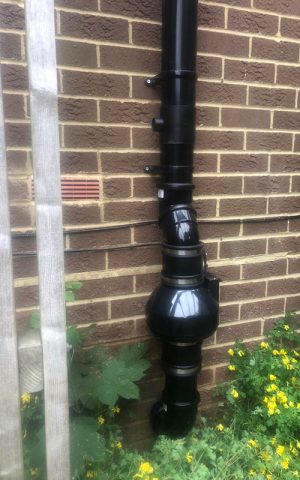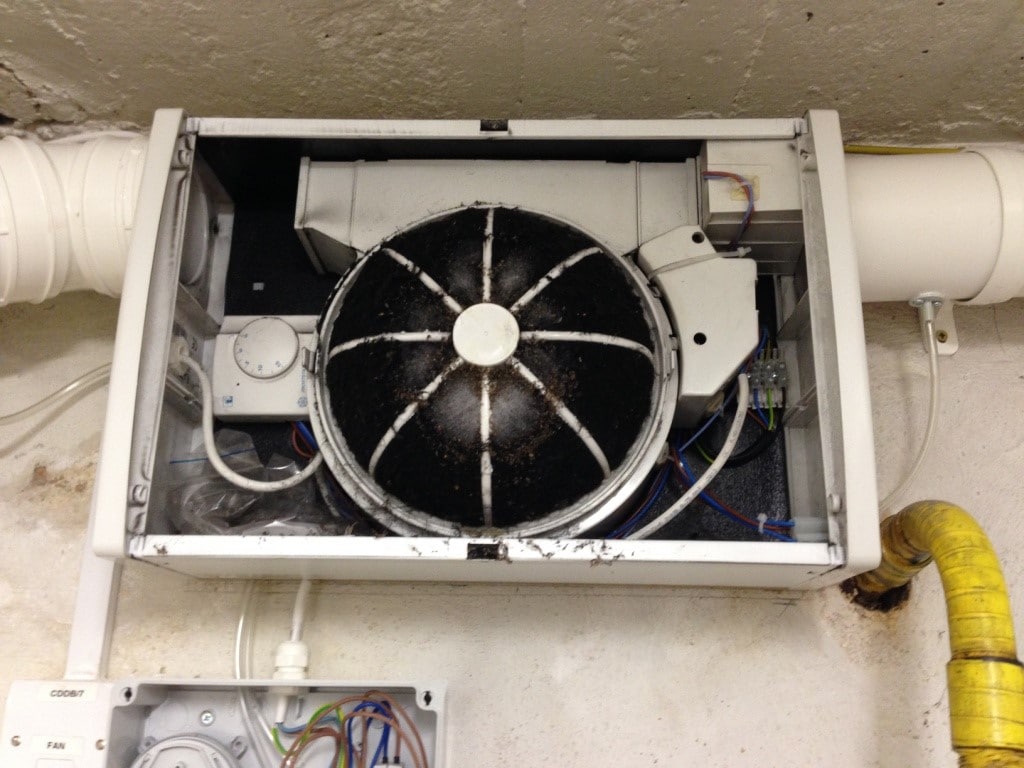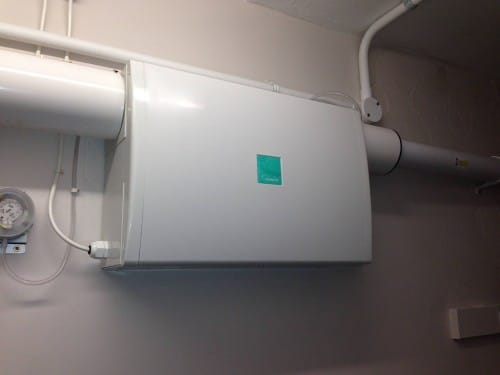Providing Radon Mitigation Services for both Residential and Commercial Properties across the UK
If your radon testing kit or your continuous radon monitor identifies high radon levels then specialist radon contractors PropertECO can help. There are two main remediation techniques available for lowering your radon levels: installing a radon sump or introducing positive pressure to the air within the property.
<a href="https://properteco.co.uk/contact-us/"
The primary objective for radon mitigation is to reduce radon gas levels to below target level however, there are many factors that must be taken into consideration when designing a mitigation system. These include how high the radon levels are, which areas of the building are affected, the overall size and layout of the building, the floor construction and of course aesthetics.
Homeowners usually carry out radon testing using a radon gas detector, one of which is placed in a living room and one in a bedroom. If the radon test results show elevated levels are present, these results are then presented to the radon mitigation specialist to use as a basis for designing a mitigation system.
In many instances, houses have a footprint that is a lot larger than a single room, therefore the radon levels throughout the ground floor can differ considerably. Other properties may have been extended, with different areas having differing floor constructions (for example part suspended and part solid).
Our fully qualified team have many years of experience implementing these methods in buildings and successfully bringing radon levels down to an acceptable concentration. You can read more about these two techniques above, or watch our short video to see how they work.


A radon sump is a popular and effective choice when it comes to radon level reduction and is the ideal choice for situations where there are high radon concentrations.
A void is created beneath the building which effectively becomes the lowest point of pressure. This means that any gas in the soil will be drawn to it. Once the gas has reached the void it can be safely vented away from the property via an exhaust pipe incorporating a fan.
The exhaust pipe will discharge any harmful gases a safe distance from the property well away from doors and windows, usually above eaves level.
New buildings in radon affected areas often have a radon sump incorporated under the floor at the time of construction, ready to be brought into use if testing shows it is necessary.
A perforated sump box is usually installed centrally beneath the building with pipework capped-off beside an external wall. To activate the sump, a fan should be fitted to the pipework and the exhaust pipe extended.
Buildings with a large footprint or properties that have had extensions added may require more than one sump system. PropertECO use sophisticated diagnostic techniques to measure the area over which a sump will have an effect. This also enables our surveyors to determine the optimum location for a sump to be installed.
Having gone to the effort of installing a radon mitigation system, it is vital to ensure that it continues to operate effectively. As radon is constantly escaping from the ground, if the mitigation system stops running, indoor radon levels will increase once again.
Radon sump fans do not contain a filter however they are drawing gas directly from the ground and other debris can sometimes also be drawn into the pipework which can make the system noisy or clogged.
We recommend that a ‘clean and check’ inspection is carried out every other year on the fan and pipework. Given that these systems are typically installed outside, it is less likely that building occupants will notice if the fan has stopped running for any reason, so it is important to proactively check this periodically.

The second method of radon reduction, positive input ventilation (PIV), involves the installation of a special fan in an attic or loft or on the internal side of an external wall if a roof void is not present.
The fan draws clean air into the property and disperses it around the property to very gently pressurise the building. In doing so, this will inhibit radon from the soil from being ‘sucked’ inside, meaning radon levels can be safely reduced.
Positive input ventilation units incorporate a filter that can get clogged with dirt, reducing the airflow through the fan. Not only does this affect the performance of the unit, but it can also ultimately lead to the motor burning out and requiring complete replacement.
The amount of air flowing through the unit with a blocked filter can be severely reduced, risking the radon levels rising and compromising the health of the occupants. Whilst most PIVs come with manufacturer’s guarantees, the filters should be cleaned regularly (at least annually) and replaced when necessary.
Our highly trained team have many years of experience in designing radon mitigation systems to successfully reduce radon levels to an acceptable concentration.
In order to design a radon mitigation system, it will be necessary for us to carry out a survey of the property so that aspects including the size, layout and floor construction can be taken into consideration, as well as the results from a radon test. Following our survey, we will produce a detailed report and specification for the recommended system and provide you with a quotation for the installation.
As part of our survey, we are able to conduct a series of diagnostic tests to build a profile of the radon concentrations throughout the property. This enables us to identify whether there is an area of particularly high radon concentration, which is likely to be the point of ingress and design a mitigation system accordingly.
This diagnostic process may also reveal an obvious defect in the floor construction, for example, which may be easy and cheap to fix without the need for a radon mitigation system, saving you time and money.
PropertECO installs radon mitigation systems for homes and commercial buildings nationwide. We are recommended by customers across the UK but don't just take our word for it. See our reviews from Trustpilot by clicking the link down below:
